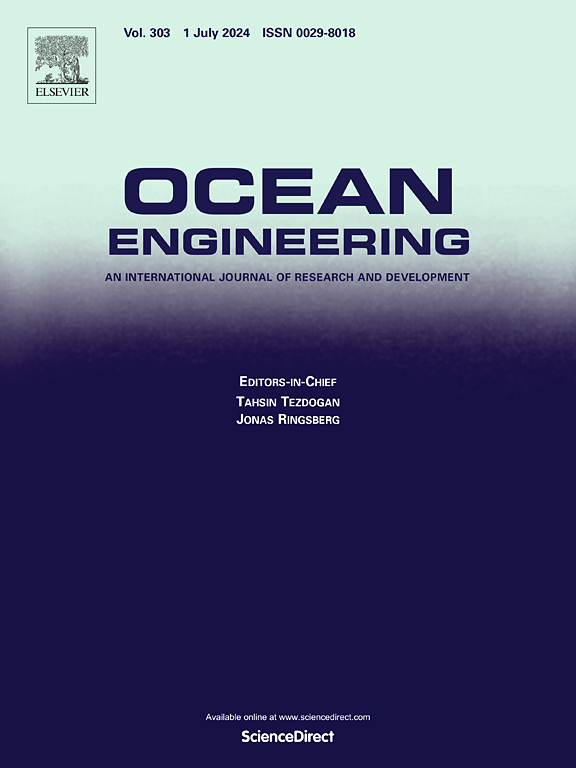Twin propeller scour in noncohesive seabed with different quay wall configurations
IF 4.6
2区 工程技术
Q1 ENGINEERING, CIVIL
引用次数: 0
Abstract
Propeller-induced scour presents a significant challenge to the structural integrity of seabeds near quay walls. This study explores the scour phenomena produced by co-rotating twin propeller under different quay wall configurations on a noncohesive seabed. Laboratory experiments were performed using sand with a median grain size (d50 = 1.2) and within a densimetric Froude number range of 4.71–6.23. The study also explores the influence of propeller spacing, speeds, and gap distances on scour characteristics. Under unconfined conditions, the scour profiles generated by twin propellers with spacings of two and three times the propeller diameter (Dp) were similar to those observed with single propellers, albeit with increased scour depths. For these propeller spacings, similar scour hole formation (single scour hole) was also observed and the width of the scour hole is greater in proportion to its length in the twin propeller tests. Novel empirical equations were derived to predict maximum scour depths for no-wall, vertical, and parallel quay wall conditions. These equations demonstrated strong correlation with experimental data, achieving determination coefficients of 0.99, 0.99, and 0.98, respectively. The findings contribute to the understanding of twin-propeller scour dynamics and provide practical tools for designing and assessing quay wall stability in ports.
求助全文
约1分钟内获得全文
求助全文
来源期刊

Ocean Engineering
工程技术-工程:大洋
CiteScore
7.30
自引率
34.00%
发文量
2379
审稿时长
8.1 months
期刊介绍:
Ocean Engineering provides a medium for the publication of original research and development work in the field of ocean engineering. Ocean Engineering seeks papers in the following topics.
 求助内容:
求助内容: 应助结果提醒方式:
应助结果提醒方式:


